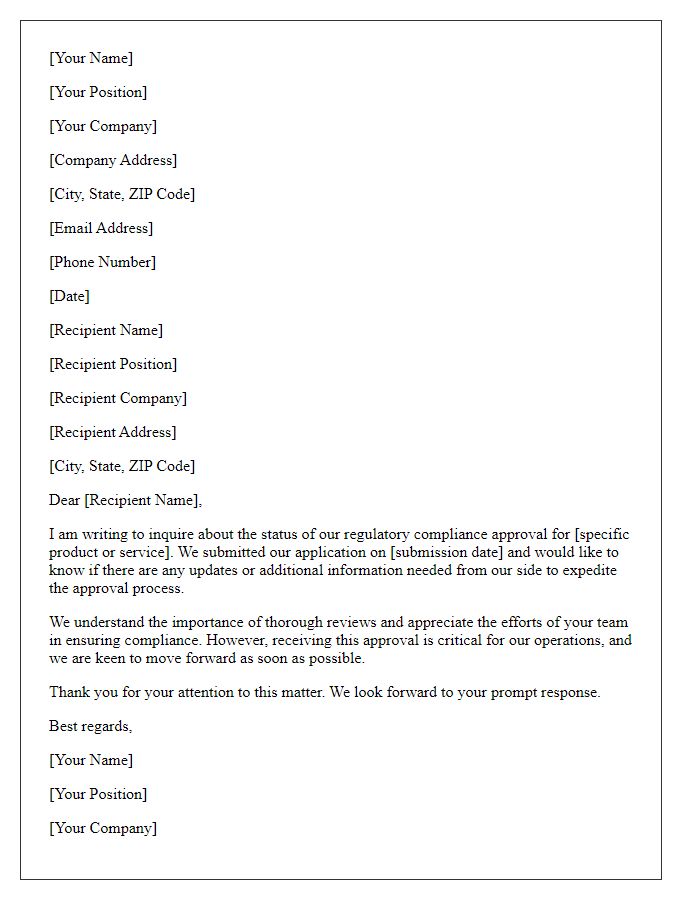Are you navigating the often complex world of telecommunications approvals? Crafting the perfect request letter can make all the difference in achieving a smooth approval process. In this article, we'll break down the essential elements of a successful telecommunications approval request letter, helping you present your case effectively and professionally. So, let's dive in and unlock the insights that will elevate your requestâread on to find out more!

Compliance with Regulations
Telecommunications approval requests often require adherence to various regulations set by governing bodies to ensure safe and efficient communication infrastructures. Companies must submit comprehensive documentation, demonstrating compliance with standards such as the Federal Communications Commission (FCC) regulations in the United States. Key requirements might include technical specifications about equipment, environmental impact assessments to address potential disruptions to local ecosystems, and detailed plans outlining the geographic area to be served. The submission may also need to include a timeline for deployment, anticipated service coverage, and a budget analysis to showcase financial feasibility. Moreover, community engagement efforts must be documented to illustrate stakeholder input and address public concerns. Failure to comply with these regulations can result in delays or outright denial of the approval request.
Environmental Impact
Telecommunications projects often require thorough assessment of their environmental impact due to regulations imposed by federal, state, and local authorities. For instance, the Federal Communications Commission (FCC) mandates that telecommunications companies evaluate potential harm to wildlife habitats, wetlands, and historical sites before advancing with infrastructure development. Proposed tower installations (often exceeding 200 feet) or new fiber-optic cable networks must adhere to guidelines that assess noise pollution levels, electromagnetic field emissions, and land use changes. The assessment process typically involves collaboration with environmental scientists and community stakeholders, especially in sensitive regions like coastal areas (vulnerable to erosion) or urban settings (subject to zoning laws). Proper documentation of these evaluations is essential for obtaining necessary permits and ensuring compliance with the National Environmental Policy Act (NEPA).
Technical Specifications
Telecommunications approval requests require precise technical specifications to ensure compliance with regulatory standards. The documentation should detail equipment specifications, including frequency ranges (for example, 800 MHz to 2.5 GHz for cellular networks), maximum transmission power limits (often capped at 2 watts), and modulation schemes utilized (like QPSK or 64QAM). Additionally, network architecture diagrams may illustrate the placement of base stations (typically located every 500 meters in urban areas), backhaul types (fiber optic or microwave links), and interference mitigation techniques. Testing procedures must also be outlined, such as drive tests conducted over specific geographic areas (including population density metrics), ensuring that the proposed system can meet quality benchmarks like call completion rates (minimum of 95%) and data throughput (at least 1 Gbps for 5G networks). Compliance with international standards, such as ITU guidelines and local regulatory frameworks, should be explicitly stated.
Community Feedback
Community feedback plays a crucial role in the approval process for telecommunications projects, especially in densely populated urban areas like San Francisco. Engaging with local residents can help identify concerns regarding infrastructure installations, such as cell towers and fiber optic lines. Public forums (usually held quarterly) can facilitate discussion around potential impacts on property values, aesthetic changes to neighborhoods, and health implications related to electromagnetic exposure. Additionally, compliance with regulations set by the Federal Communications Commission (FCC) ensures that the process is transparent and that community voices are heard effectively, potentially resulting in modifications to proposed projects based on resident input.
Implementation Timeline
The implementation timeline for telecommunications approval requests typically spans several key phases, including initial planning, regulatory review, infrastructure development, and final testing. The initial planning phase usually lasts around four to six weeks, involving stakeholder meetings and project outline development. Following this, the regulatory review phase can extend from two to six months, depending on the specific telecommunications regulations and approval processes of regions such as the European Union or the United States. Infrastructure development, which may include the installation of fiber optic cables or cellular towers, often takes three to twelve months, contingent on factors like geographical location and weather conditions. Final testing and optimization generally take an additional four weeks to ensure seamless service delivery and compliance with quality standards before the official launch of telecommunications services.













Comments